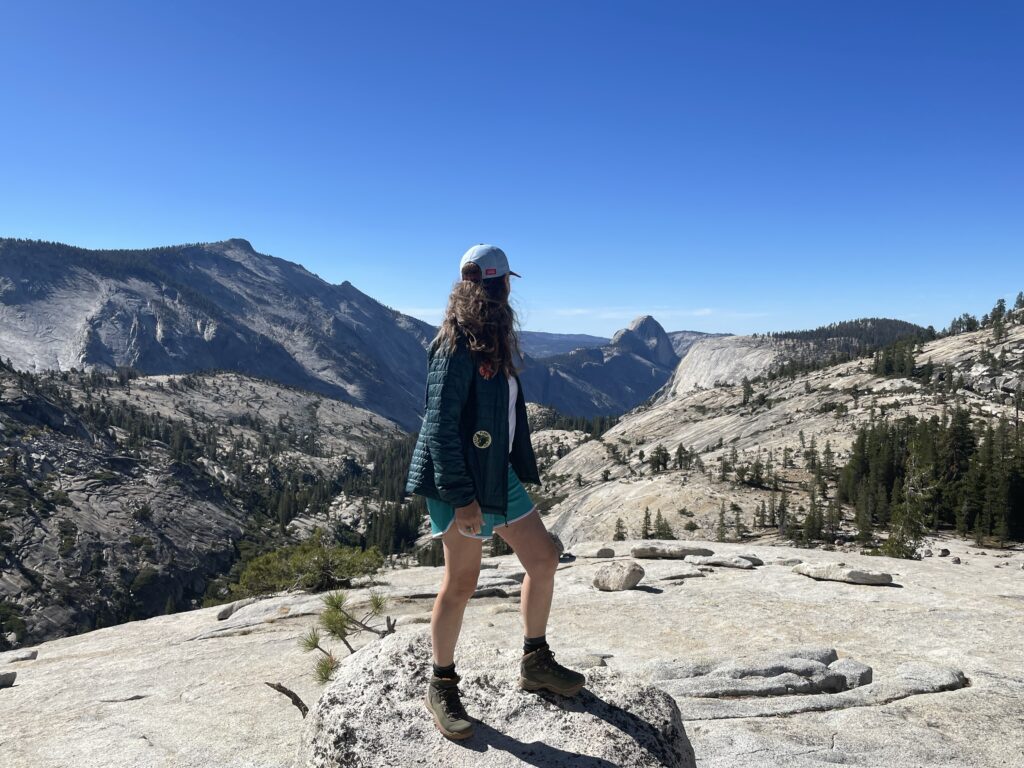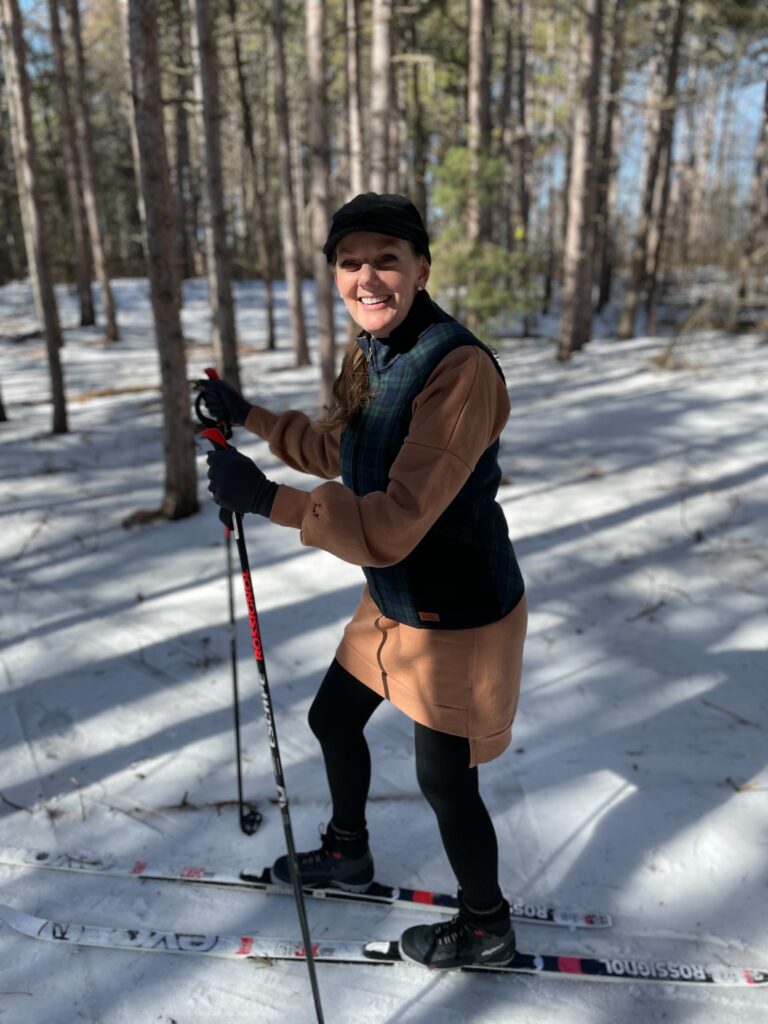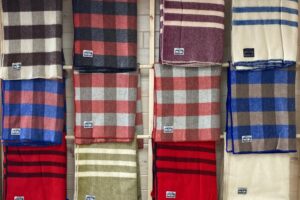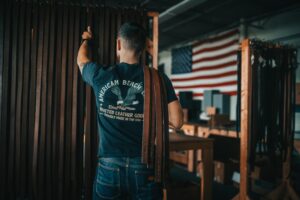Photo features Laura Brouwer (@brouwerl).
As an avid backpacker and adventurer, I love heading out overnight into nature with everything I need fitting into only a backpack. Are you my people, and does that sound fun to you? Or are you more of a curious type checking out this blog to see if backpacking is something you might enjoy? Either way, I’ve learned tips over my eight years of backpacking, and I’d love to share them with you.
Stay Organized
First, I’m an organization gal, so making a standard packing list has got to be the number one tip I share. Just as important as creating and having a packing list, you must check that list before going out on each adventure. That’s correct: each adventure needs its own list. You may think you can remember to pack everything, but trust me, you can’t. A quick pre-trip double-check can save you from potential discomfort (and I mean a lot of discomfort) or even save you from an adventure ending prematurely.
Along the same idea of organization, make sure to store all your backpacking gear in one place or location. I began doing this little organizational gem for a few years, and it has proved helpful and a time saver. One large tote is the “location” for everything backpacking-related. I simply pull out the tote pre-adventure, and everything I need is already there. The same thing goes for post-adventure—I do normal cleaning of my gear before storing and restocking.
Implementing any one of the organization tips will greatly decrease your odds of doing a stressful scavenger hunt around your house ever again for the missing _______ (you fill in the blank—you know what you forgot!).
Get Yourself Solid Boots
Good ole pair of hiking boots? Everyone needs these for backpacking. My preference is boots over shoes, and I landed on boots for the ankle support they provide me on long hiking days over rough ground. I’ve found that I need the extra support boots provide in comparison to hiking shoes. If the ground you hike while backpacking is mainly flat, shoes might be perfect for you.
More important than your hiking shoe type is the type of socks you choose. I have experience that this is crucial for comfortable, blister-free feet while backpacking and hiking. Consider socks made of merino wool. Please heed this caution and seriously keep cotton socks at home, as they will NOT be your friend on the trail.
Optional footwear I pack is a lightweight sandal suitable to get wet. Once I arrive at my backpacking stop for the day, I prefer to change into a sandal as it makes doing camp tasks such as pumping water or cleaning dishes easier.
Pack Light
The most subjective question asked around backpacking has got to be what clothes to pack or not pack. My third tip, based on what I quickly learned while backpacking, is to keep packing simple and lightweight. I’ve found backpacking is much more enjoyable without a heavy or overloaded backpack, so I’ve learned to resist the need to pack duplicates for “just in case” moments. Since we’re all unique in our preferences, if packing the kitchen sink brings you enjoyment, who am I to tell you what your needs are? In “packing simple,” my tip is to take what you need and leave behind what you think you might use. From my years of experience backpacking, if the item doesn’t serve a purpose for the current trip, you don’t need to pack it along.
An excellent material type you’ll be most comfortable backpacking in should be moisture-wicking and a breathable fabric. I backpack primarily in Michigan, the Great Lakes State, and because of the usual available water source nearby, I always pack something to swim in. Michigan can also have some unpredictable weather, so I always pack a raincoat and my favorite Stormy Kromer Waxed Cotton Cap, which is perfect for all types of weather, including cool Michigan sunsets and early morning sunrises.
Bring Your First Aid
Your first aid kit is essential for a safe backpacking trip. At a minimum, your first aid kit should contain standard items like band-aids, wound wipes, triple antibiotic ointment, gauze, and adhesive tape. You can purchase a standard kit at any drugstore, and they are relatively inexpensive.
Your kit should include all prescription medications you take regularly or in case of emergencies (ex. EpiPen). Over the years, my personal backpacking first aid kit has evolved to include items that have “saved the trip,” such as an EpiPen, painkillers (anti-inflammatory), lidocaine patches, antidiarrheal, antihistamine, tweezers, safety pins, sunscreen, and bug repellent (citronella essential oil). If you implement only one tip from all these, I hope you strongly consider starting with safety first.
Grab Trekking Poles
Once I started using trekking poles for backpacking, I haven’t stopped. There’s a misconception out there that if you use trekking poles, you are either weak or old. I want to break any disbelief you may have heard about trekking poles and shed light on what I’ve found to be their benefits.
I use trekking poles to engage my upper body during hiking for full-body activity. Another benefit is that I can cover more distance much faster with trekking poles. My ability to ascend is quicker and descending has a milder effect at the end of a day on joints like knees and hips that take the brunt.
The use of trekking poles during backpacking is necessary if the terrain you’re in is unstable. As I mentioned earlier, I backpack primarily in Michigan, where the terrain is not necessary for poles. I just like them and consider them to be my nice-essity. Yes, I just made that word up.
With the basics covered, you should be ready to set out on your next backpacking adventure without a hitch. When in doubt, go back to the basics and remember to have fun. Adventure awaits!








